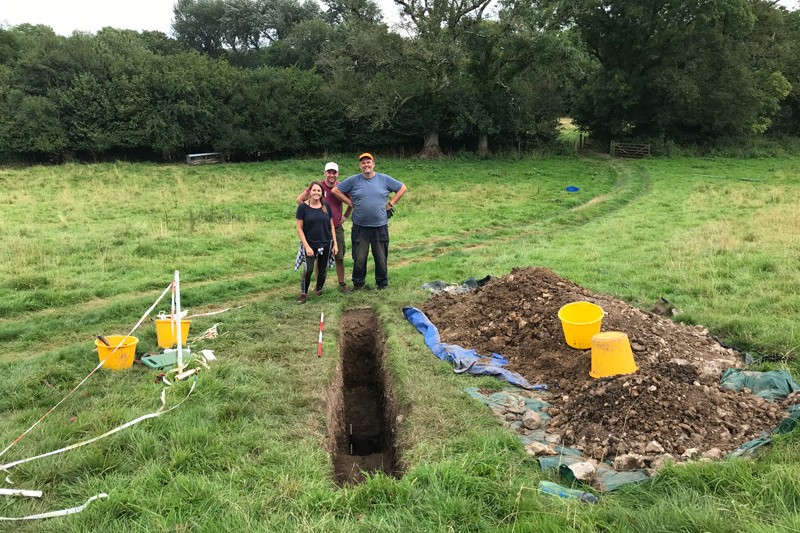BU's Emeritus Professor Nigel Jump writes the first in a series of economic blogs looking at the impact of covid-19 on the economy.
CURRENT SITUATION
Last autumn (2019), the UK economy looked flat and fears of recession were growing. Brexit uncertainty and wider international worries had set a sombre mood. Sadly, those risks, though still significant, were soon eclipsed by the impacts of the coronavirus pandemic.
Economic indicators for the first months of 2020 are now available. In the first quarter (Q1), UK real GDP fell 2% quarter-on-quarter and 1.6% year-on-year: in normal times a big reverse. In April, measures of current and expected activity, such as the various sector, national, international and regional purchasing managers’ indices, dropped sharply and remained universally awful.
This quarter (Q2) all aspects of expenditure, investment and trade have turned negative. Demand has been decimated and supply chains ruptured. UK economic activity fell off a cliff in late March, perhaps hitting bottom in April or early May.
Since late March, the UK and its constituents have exhibited much lower consumer spending, very weak manufacturing and services (outputs and exports), and stalled construction. In April, transport activity (road, rail and air) and sales (vehicles), on-line searches for services (especially hospitality and tourism) and retail (volume -18% month-on-month in March) and leisure footfall, all plummeted. Some things stabilised in May but only at very low levels.
UK inflation sank to 0.8% in the year to April, led by c20% falls in commodities (some agricultural foods and many industrial materials) and c70% in oil prices. These were only minimally offset by some food and other ‘shortage-driven’ price hikes. Sterling has been volatile and is now about 2.5% lower than in January.
The policy response to the sudden economic decline, with its horrendous health and economic costs, has been massive. Central banks have cut base interest rates virtually to zero and printed lots of money. Treasuries have loosened fiscal policy, taking extreme measures to support jobs, firms and households. This monetary and fiscal rescue mission is expected to last for some time. Its long-term consequences for state economic involvement, public debts, taxation yields, and employment prospects will be profound. Big changes in economic structures and behaviours may follow.
Only food, drink and tobacco and a few service sectors (notably health related and some on-line sales) have remained growth positive. The former has been driven by panic stockpiling and substitution effects (away from restaurants and other communal eating) and the latter by public health and distancing.
Meanwhile, the virus-led disruption has transformed the labour market, through home working and furloughed employees. The latest UK employment (76.6%) and unemployment (3.9%) rates for Q1 were deceptively strong. They did not include many announced or prospective ‘lay-offs’. The claimant count numbers increased sharply (+850,000) after lockdown, and earnings, hours (-25% during March) and vacancies (-50% in April) deteriorated rapidly. Sadly, most of the bad news on jobs is yet to come.
Meanwhile, some one-fifth of businesses report more than 50% of non-labour inputs have been affected (costs up and access down) by the lockdown recession. Given evidence of a severe decline in consumer and producer confidence, Q2 is going to reveal bad numbers: perhaps, the steepest falls in activity and growth since the Great Depression (1930s). About 80-90% of businesses anticipate sales below pre-recession levels well into 2021 and expect staff headcounts to decline at least through the rest of 2020. The virus-driven ‘lockdown recession’ is well underway.
CURRENT PROSPECTS
No one can predict where the lockdown recession is headed with certainty or accuracy. Some commentators suggest a 25% fall in GDP this quarter (April-June), a doubling of unemployment by end year, and deflation to come.
It could be worse: the current consensus is for a U, or even an L, shaped recession, rather than a V. Whatever its shape, the recovery is expected to be shallower and longer than the collapse. All we can do is signpost the direction of change, but not the timing nor the magnitude, especially to working, consuming and business practices.
Any forecast has to assume answers to a long list of hard questions, including:
- When and how will social distancing affect normal trade and exchange?
- Will demand be constrained by recurring virus waves as well as poor earnings (incomes and profits)?
- Just how risk averse will consumers and businesses be?
- How long will governments and central bankers maintain the current fiscal and money stimulation and how will they eventually claw back the excess?
- When and how much will bankers and financial investors respond to any green shoots in the securities markets?
- Is ‘globalisation’ going to be reined back with less international co-operation and more emphasis on self-reliance (‘just in case rather than just in time’)?
- Will a vaccine or other medical solutions come sooner or later or do we face a bleak winter for UK public health and economic activity?
- How will the recent neglect of other health effects play out for people, businesses and institutions in the years ahead?
- Is open plan office working and mass commuting permanently affected and how will property and other markets adjust to the new realities?
- Will the skewed distribution of the virus impact (in terms of old health and young wealth) be addressed when economic policy is reversed?
- Is “cashless” going to be a much bigger proportion of the economy and what does that mean for social cohesion, as well as patterns of demand and supply?
- Is this the time to properly address climate change?
At present, risks seem heavier on the downside. There is, however, some scope for optimism: positive ‘animal’ spirits (entrepreneurship and innovation) are always potential human responses to economic adversity. If a cure or a prevention for Covid19 is discovered soon, the bounce back could be stronger than now expected in 2021.
Some scenarios put UK GDP levels and inflation rates back to 2019-sort of numbers by 2022/23. Others push it into 2024. Much higher unemployment seems inevitable. A shake-out of ‘zombie’ companies (non-viable corporate and self-employed entities), is plausible. Higher productivity amongst the ‘survivors’, however, and a re-allocation of human and other resources to more ‘future-proof’ activity (including environmental sustainability) could surprise us on the upside.
Stock markets are already off the bottom. Does this reflect an overshoot downwards or does it anticipate a bounce back? The positive signs are relaxation of lockdowns, boosted health and technology companies, wider corporate flexibility to new ‘opportunities’, and previous under-valuation. Money printing (through loans and liquidity) should help investment and final demand to recover, albeit at a risk to future inflation.
The target for state and private actors must be to limit short-term damage and to plan for long-term opportunity. The worst case is that we erode existing vital skills or do not invest in the capacities needed for the upturn.
- The banks, financial markets and other professions (including education) need to be part of the solution rather than the problem, maintaining a long-term vision as well as measures for short-term survival.
- The authorities need to steer carefully as they plan for a new monetary, tax and spending world: one with the infrastructure suitable for an economy with greater local supply resilience and wider trading capability.
As they focus on the pandemic, now IS NOT the time for the UK politicians to screw up the Brexit, “Amentry” and other trade talks. Importantly, now IS the time to think seriously about domestic incentives for future trading, training and funding. What kind of economy do we want to rebuild from the viral ruins?
This summer, most local businesses and households are focussed on day-to-day survival. But, just as allied governments started to prepare for the economic structures needed for peace before WW2 was actually won, current leaders need to prepare a ‘new deal’ for the world economic order of the mid-late 2020s. Under Roosevelt and Churchill, the Bretton Woods agreement (1944) created a foreign exchange system that lasted intact for two decades and a half and persists in various forms today. Creating the International Monetary Fund, the World Bank and the General Agreement on Tariffs and Trade – later under the WTO), Bretton Woods set the tone for a global economic renaissance.
In 2020, we need a similar spirit of mutually co-operative and beneficial action at the top. We also need local companies and agencies prepared to invest in productivity-led, environmentally sound, medium-term development opportunities.



